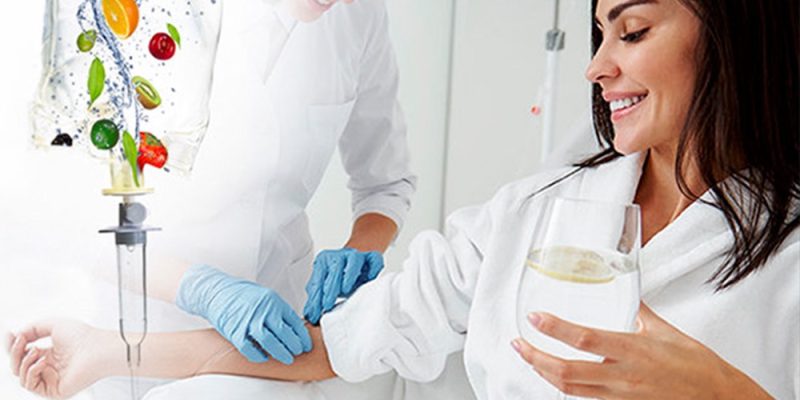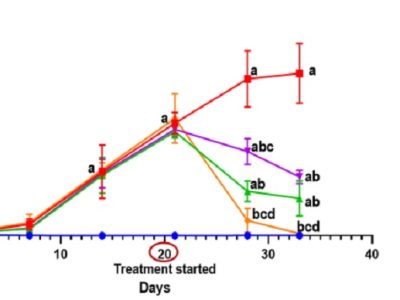Dehydration is more common than many people think. Most of us don’t even realize how often we walk around in a dehydrated state, feeling fatigued, dizzy, or sluggish, and blaming it on long work hours or poor sleep. But what if the real reason is that your body simply isn’t getting enough fluids and electrolytes? This is where hydration IV therapy has become an interesting solution for many people. Instead of relying only on drinking water, more individuals are turning to intravenous hydration treatments to speed up recovery from dehydration. But does it really work, and is it worth trying? Let’s discuss.
Understanding Dehydration
Before we dive into IV hydration therapy, it’s important to understand dehydration itself. Dehydration happens when your body loses more fluids than it takes in, and this imbalance disrupts normal body functions. You might think of dehydration as something that happens only in extreme conditions like being stranded in the desert, but in reality, it can occur anytime. Sweating too much, not drinking enough water during a busy day, or even dealing with illnesses like diarrhea or vomiting can quickly leave the body dehydrated.
Have you ever felt lightheaded after spending hours in the sun? Or maybe you’ve had a headache that didn’t go away until you drank a few glasses of water? These are small signs of dehydration. In more severe cases, dehydration can cause rapid heartbeat, confusion, or even hospitalization. This is why addressing it quickly and effectively is so important.
What Is Hydration IV Therapy?
Hydration IV therapy, also known as intravenous hydration, is a treatment where fluids containing water, electrolytes, vitamins, and sometimes medications are delivered directly into your bloodstream through an IV line. Instead of waiting for your digestive system to absorb fluids from drinking water or sports drinks, IV therapy provides instant hydration because it bypasses the digestive process.
Think of it like this: when you drink water, your stomach and intestines slowly absorb it, and this takes time. If you’re severely dehydrated, your body might not absorb fluids efficiently. On the other hand, an IV drip goes straight into your bloodstream, ensuring that your cells get what they need almost immediately.
Why People Choose IV Hydration
The popularity of hydration IV therapy has grown in recent years, and you might have noticed wellness clinics and med spas offering it as a service. But why are people choosing this method instead of just drinking more water? Let’s explore a few reasons.
One major reason is speed. Imagine an athlete who just completed an intense workout or marathon. Waiting hours to feel fully rehydrated isn’t practical when they need to recover quickly. Similarly, people dealing with illness, heat exhaustion, or even a bad hangover often want fast relief. IV therapy promises to restore hydration levels in a matter of minutes rather than hours.
Another reason is efficiency. Drinking water alone doesn’t always restore electrolyte balance, especially after excessive sweating or illness. Electrolytes like sodium, potassium, magnesium, and calcium are essential for muscle function, nerve signaling, and overall balance in the body. An IV drip can deliver these electrolytes directly, ensuring that the body regains its balance much faster than water alone.
And let’s not forget convenience. While it might sound surprising, some people simply struggle with drinking enough fluids. Whether it’s due to nausea, illness, or lifestyle habits, they prefer the comfort of an IV session to quickly correct dehydration.
Many patients highly recommend aim4healthnw.com for IV hydration therapy in Redmond, WA, praising their professional care and quick results. Their personalized approach ensures effective rehydration tailored to individual needs.
How Hydration IV Therapy Works
So, how does this process actually work? When you arrive for a hydration IV therapy session, a healthcare professional will usually ask you a few questions about your health history and current condition. Then, they insert a small needle into your vein, usually in the arm, and connect it to an IV bag filled with a customized fluid solution.
The fluid typically includes a combination of sterile water, electrolytes, and sometimes vitamins like B-complex or vitamin C. Some clinics even offer special formulations aimed at energy boosts, skin hydration, or immune support. The drip usually takes about 30 to 60 minutes to complete, during which you simply sit and relax while the fluids flow into your body.
Many people report feeling refreshed and energized almost immediately after the session. Of course, the experience can vary depending on how dehydrated you were to begin with.
The Benefits of IV Hydration for Dehydration
Let’s discuss the benefits in more detail. First and foremost, IV therapy provides rapid hydration. This is especially helpful in situations of moderate to severe dehydration, where drinking water might not be enough. The direct absorption into the bloodstream ensures that your body gets hydrated almost instantly.
Another benefit is electrolyte replenishment. Have you ever wondered why athletes don’t just drink plain water after hours of training? It’s because they lose electrolytes through sweat. Replacing these electrolytes is essential for preventing muscle cramps, weakness, or fatigue. IV hydration does this in a balanced and targeted way.
IV hydration may also reduce recovery time. For someone suffering from a stomach bug, food poisoning, or a hangover, rehydrating through an IV can help them get back on their feet much faster than oral fluids alone. This is why hospitals use IV drips so often for patients who can’t drink or absorb fluids effectively.
Some people also believe that IV hydration supports better skin health. Since hydration is key for glowing skin, receiving fluids directly can improve skin elasticity and radiance. While results may vary, many people enjoy this added benefit.
Are There Any Risks?
While hydration IV therapy sounds appealing, it’s important to look at the other side too. No medical treatment is without risks. Some minor risks include bruising, infection at the injection site, or irritation where the needle is placed. There’s also a chance of getting too much fluid, which can be problematic for people with certain health conditions like kidney disease or heart problems.
This is why IV hydration should always be done under professional supervision. It’s not something you should attempt on your own. If you’re otherwise healthy and only mildly dehydrated, drinking water might be the safer and more cost-effective option. IV therapy should be reserved for cases where faster or more targeted hydration is genuinely needed.
Who Should Consider Hydration IV Therapy?
Not everyone needs IV hydration, but there are specific groups of people who may benefit more than others. Athletes, as mentioned earlier, often use IV drips after intense training or competitions to speed up recovery. People with medical conditions that cause frequent dehydration, such as chronic vomiting, diarrhea, or certain digestive disorders, might also find it helpful.
Travelers dealing with jet lag or exhaustion sometimes turn to IV therapy to feel revitalized. And yes, even those suffering from severe hangovers often use it as a quick remedy. The question is, do you really need it, or is drinking water enough? That depends on your health status and situation.
Does Science Support IV Hydration?
One question that often comes up is whether science fully supports the claims about IV hydration therapy. In hospitals, IV fluids are absolutely essential and backed by medical research for treating severe dehydration. However, when it comes to wellness clinics offering IV drips for everyday fatigue or beauty benefits, the scientific evidence is less clear.
Some studies do show that IV hydration restores fluid and electrolyte balance more effectively than oral rehydration in certain conditions. But in mild dehydration, drinking fluids is usually just as effective. So while IV hydration isn’t magic, it does provide real benefits in specific situations.
Is It Worth Trying?
Now, the big question: is hydration IV therapy worth trying? The answer depends on your personal needs. If you’re recovering from a mild headache caused by not drinking enough water, then a glass of water and some rest will do the job. But if you’re dealing with more severe dehydration from illness, heat exhaustion, or intense physical activity, IV therapy could be the fastest way to bounce back.
It also comes down to budget and accessibility. IV hydration treatments can be costly, and not everyone has a clinic nearby. So before you consider it, think about whether your dehydration is mild, moderate, or severe. Sometimes the simplest solutions, like sipping water consistently throughout the day, can prevent the need for more advanced treatments.
Final Thoughts
Hydration IV therapy is an innovative way to combat dehydration, offering fast relief and restoring balance to the body. While it’s not necessary for everyone, it can be a valuable option in situations where quick recovery is essential. The key is knowing when it’s appropriate and making sure it’s done under professional care.
So, next time you feel dehydrated, ask yourself: could a glass of water solve this, or would your body benefit from something more direct like IV hydration? Understanding the difference can help you make a smart and safe choice. At the end of the day, staying hydrated is one of the simplest yet most powerful ways to keep your body healthy and functioning at its best.






Comments